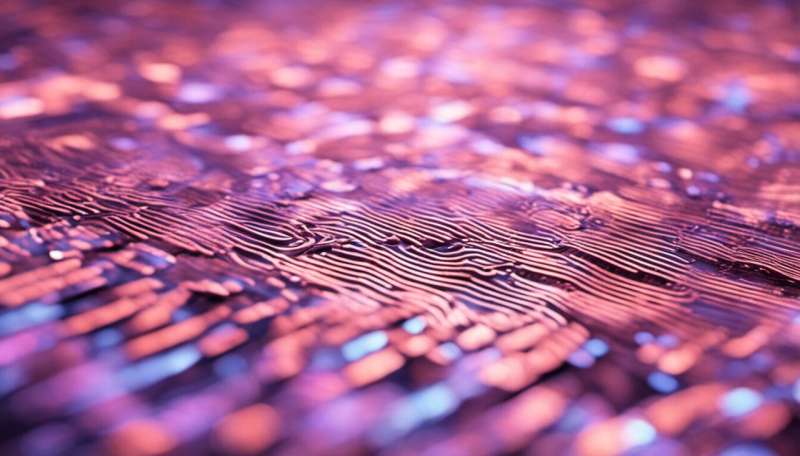Two-dimensional sheets of electronic materials show promise for practical nanoelectronics

Two-dimensional sheets of electronic materials, such as graphene, show promise for practical nanoelectronics applications, including transparent electronic circuits used in electronic displays. Molybdenum disulfide (MoS2) is of particular interest because, unlike metallic graphene, it is semiconducting, like silicon—the semiconductor that underpins today's computer technology.
Now, Yongqing Cai from the A*STAR Institute of High Performance Computing in Singapore, with colleagues from China and the United States, has calculated that, by adding hydrogen to a MoS2 surface, regions of the surface can be converted into metallic 'roads'. These roads can transport electrical charges between different areas of a MoS2 nanosheet, enabling the fabrication of integrated electronic circuits.
Computer chips require both semiconductors and metals. Semiconductors (typically silicon) are the basis for electronic components such as transistors, whereas metals (generally copper or gold) are used for wires that transport electrical charges around a chip. One advantage of using two-dimensional sheets such as MoS2 is that semiconductors and metals can be integrated on the same sheet, facilitating the development of nanoscale computer chips.
For this to become a reality, the semiconducting properties of a MoS2 sheet need to be modified to enable some areas of the sheet to become metallic and hence electrically conducting. Cai dubs these regions 'nanoroads'. "The design of conductive nanoroads on two-dimensional nanosheets—in a way that doesn't compromise their structural integrity—is critical for transporting electrical charges and to create reliable, highly conducting channels for nanoelectronics applications," explains Cai.
MoS2 has to be modified before it can conduct electricity, since it requires additional atoms to be able to transport electrical charges. The researchers simulated the effects of adding hydrogen atoms to the surface of a MoS2 sheet and found that MoS2 will become metallic in areas where hydrogen atoms bond to its surface. They showed that adding lines or chains of hydrogen atoms to the surface created metallic strips. The researchers' calculations reveal that these strips, or nanoroads, are reliable electrical conductors, and, importantly, they do not damage the structure of the underlying sheets.
In terms of practical implementation, the technology already exists for depositing hydrogen on semiconductor nanosheets: hydrogen has been deposited on other two-dimensional sheets, including graphene. Before MoS2 sheets can be used to produce components such as transistors, a method for producing electron-deficient regions needs to be developed. Once this practical challenge has been addressed, the way will be open to successfully using MoS2 in integrated electronic applications.
More information: Cai, Y., Bai, Z., Pan, H., Feng, Y. P., Yakobson, B. I. & Zhang, Y.-W. "Constructing metallic nanoroads on a MoS2 monolayer via hydrogenation." Nanoscale 6, 1691–1697 (2014). dx.doi.org/10.1039/c3nr05218d
Journal information: Nanoscale

















